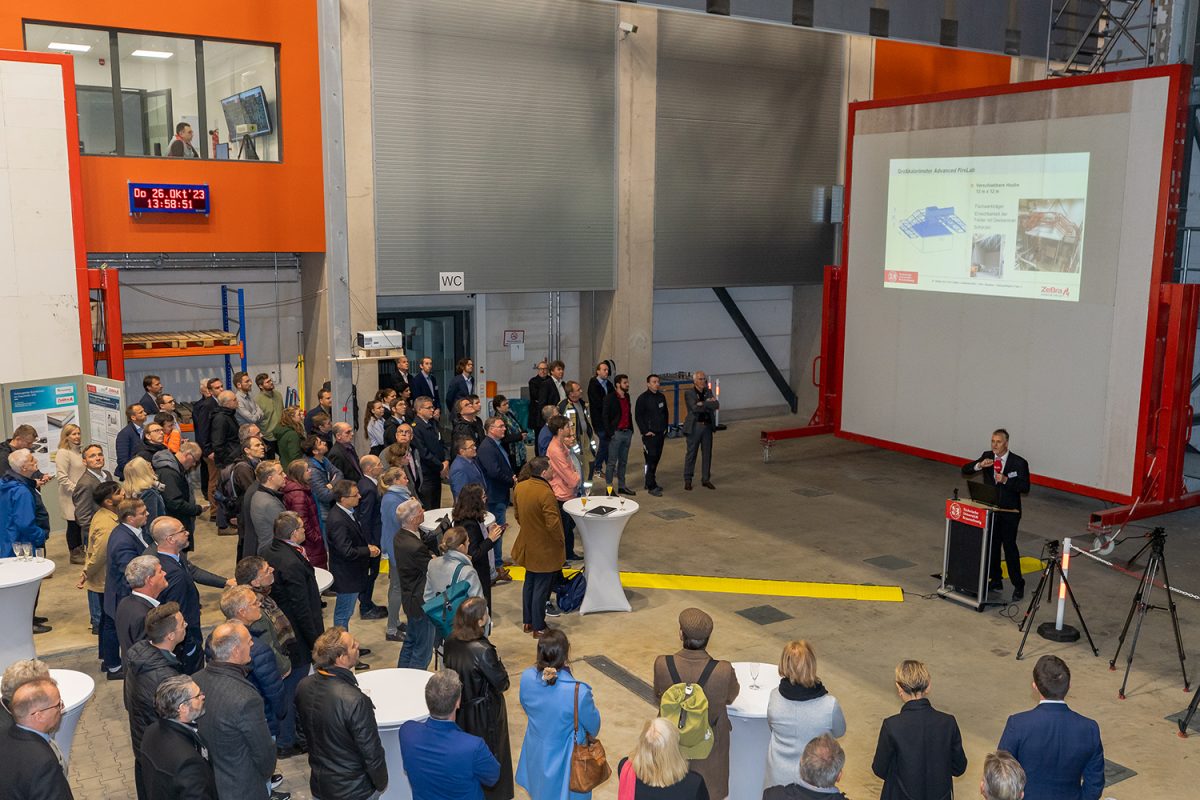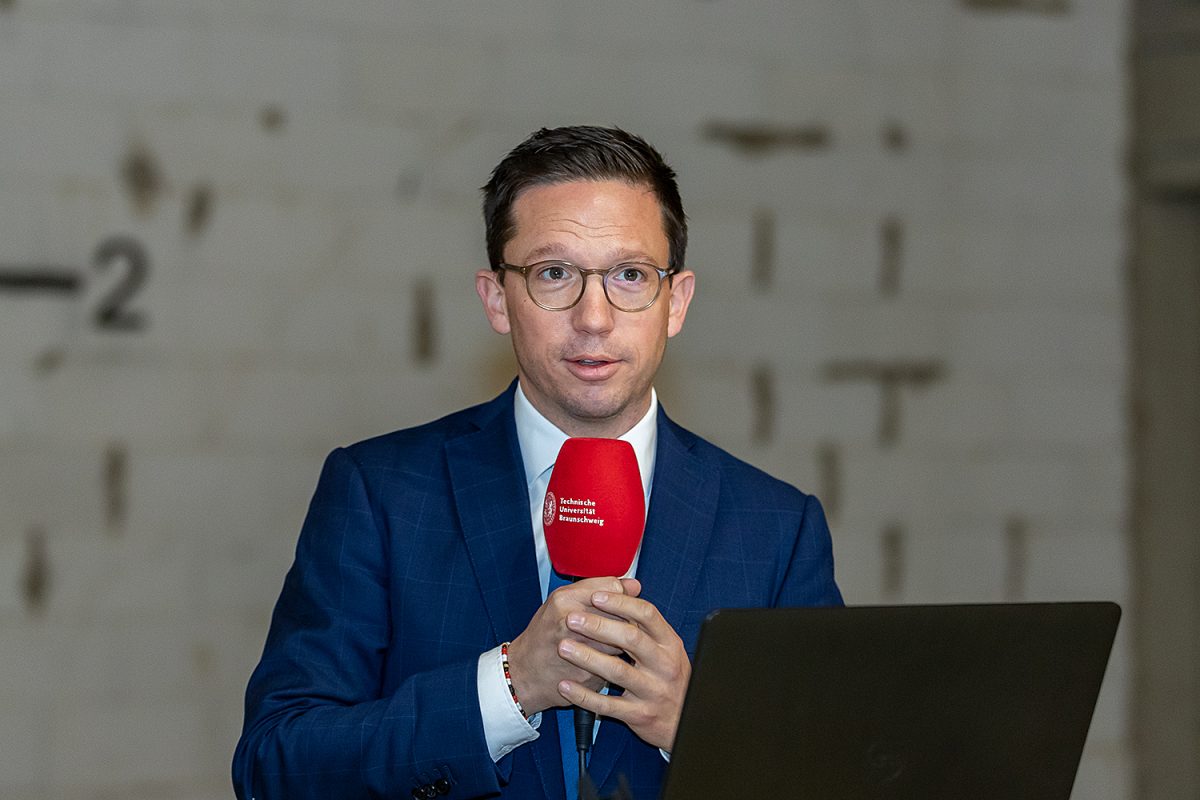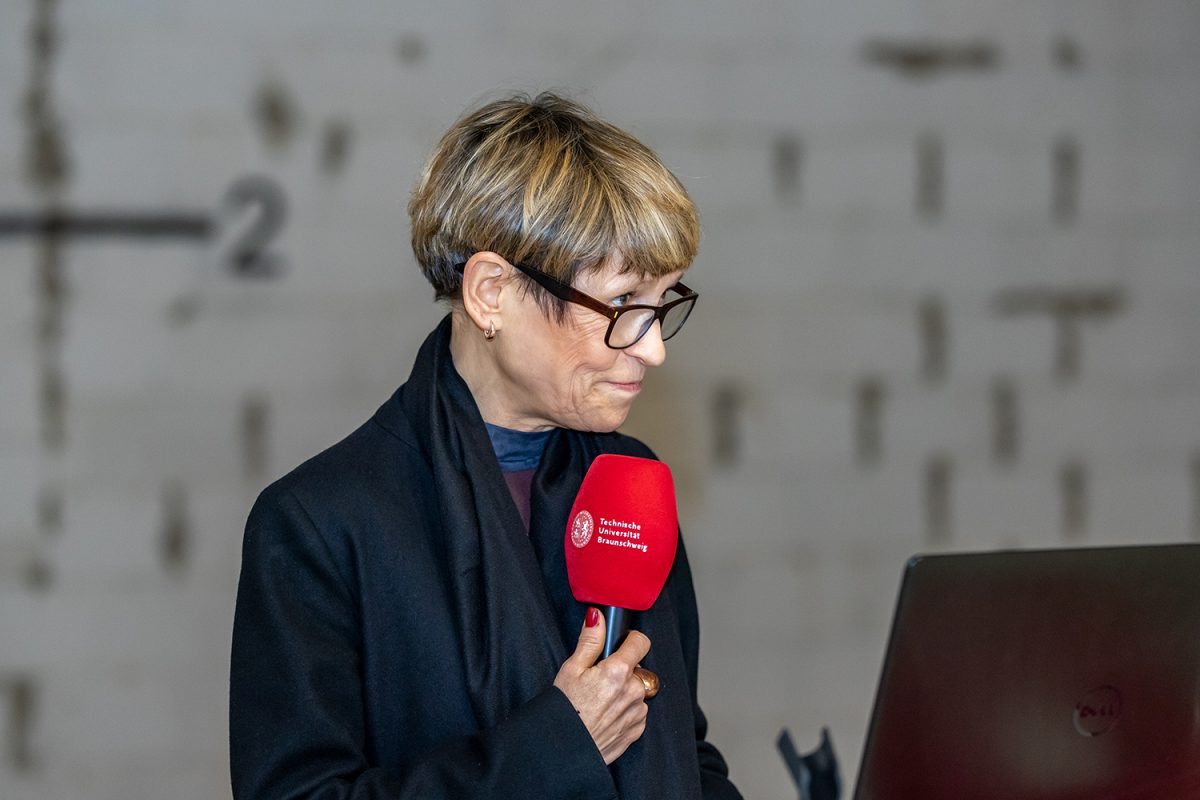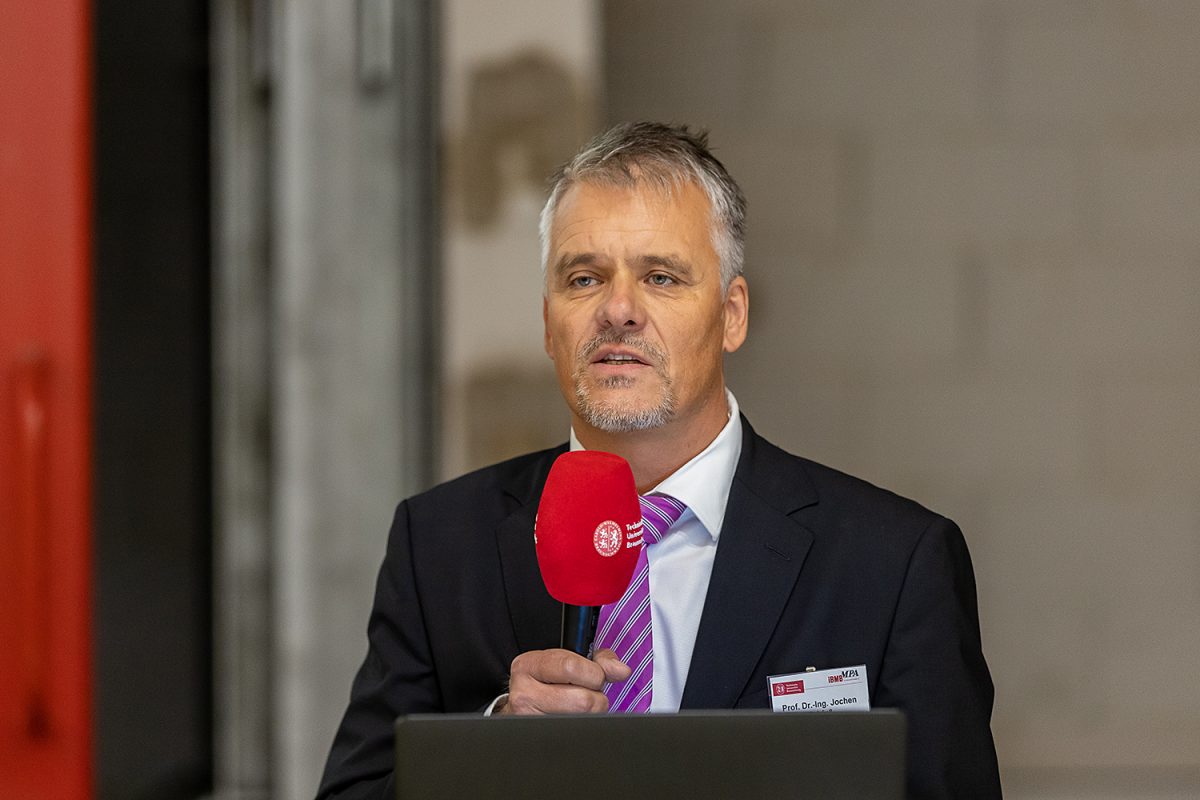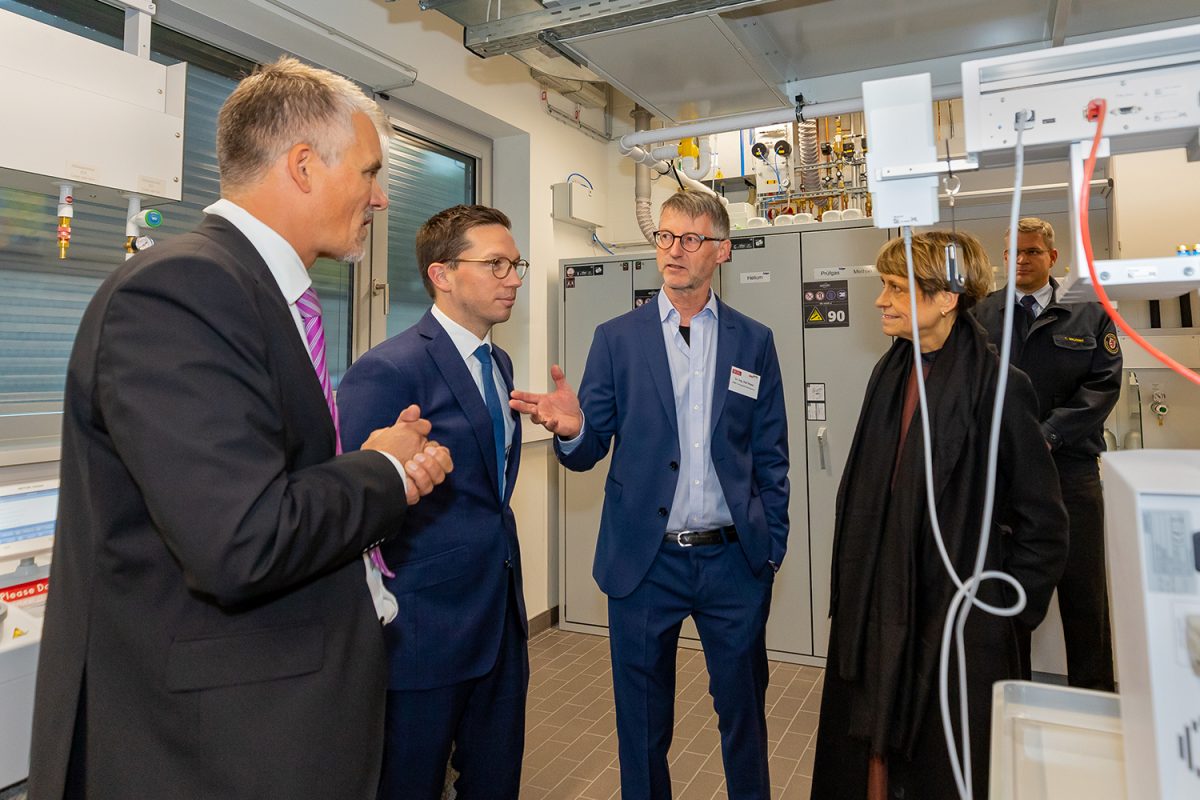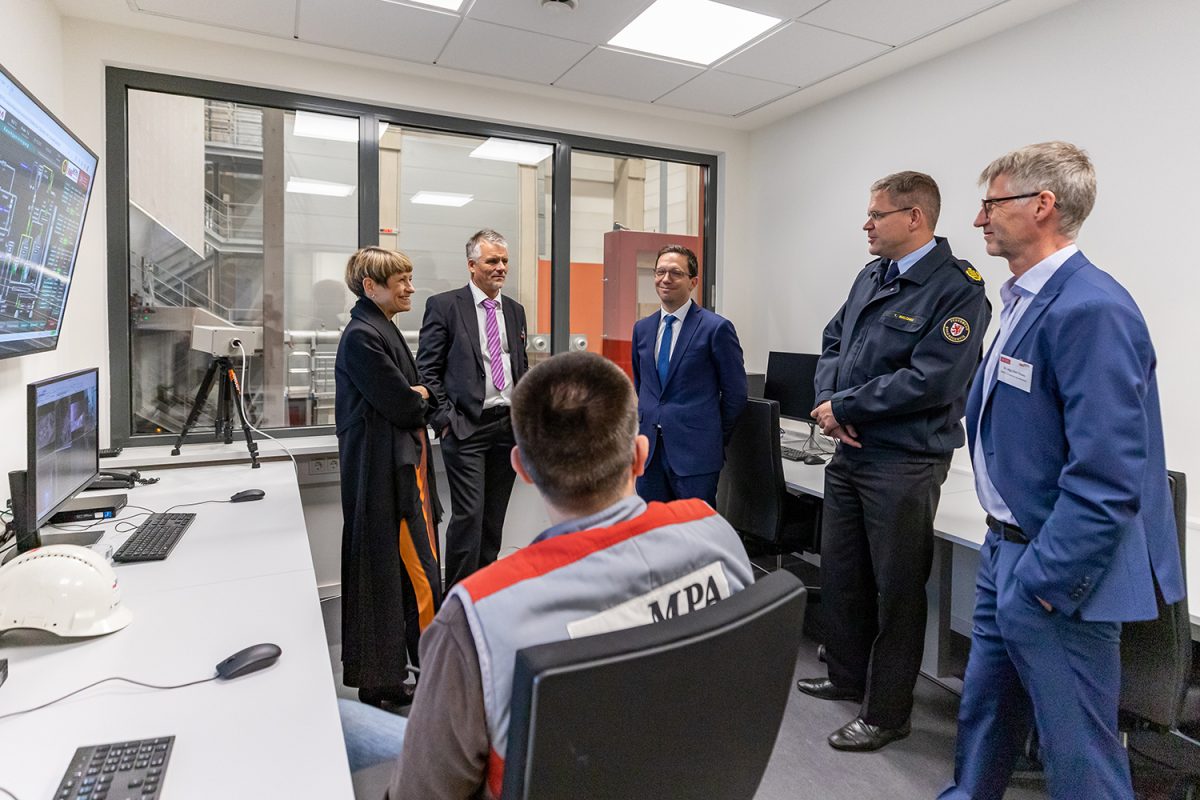Feuer und Flamme für die Zukunft: Zentrum für Brandforschung eröffnet
- Europe-wide unique research infrastructure on large calorimeters
- Interdisciplinary research on the fire safety of sustainable construction methods and products of the energy transition
- Laboratory equipment enables investigation of fire dynamics from small to real scale
Multi-storey houses made of wood, insulation made of hemp or algae, digitally manufactured components, energy storage in vehicles. The research building of the Centre for Fire Research at the Technical University of Braunschweig was inaugurated today to ensure and research fire safety in sustainable construction methods and new products of the energy revolution. The research centre, with a research infrastructure that is unique in Europe and offers unique experimental opportunities, will help to find answers to questions in fire research and thus make a contribution to the city of the future. The construction costs of €25 million were shared equally by the federal and state governments.
In order to meet society’s need for safety and to be able to design safe, sustainable buildings and products, the Centre for Fire Research (ZeBra) has set itself the goal of researching fire behaviour and hazard potential. The development of new types of construction can only be successful if the risk of fire is minimised and the effects of fire can be accurately predicted using efficient and robust prediction models. To this end, ZeBra takes a holistic approach: on the one hand, the centre enables the efficient modelling and simulation of fires in order to produce predictions of fire behaviour, and on the other hand, experimental large-scale fire tests are carried out in order to obtain corresponding data for numerical modelling. The results of this fire research are used in risk analysis and safety concepts, for example.
Research building with equipment unique in Europe
ZeBra’s custom-built research building is divided into three sections: a two-storey office and measuring room block, a 23-metre-high experimental hall and the 16-metre-high flue gas cleaning hall. The Advanced Firelab is the heart of the new research building. Fires of up to 20 megawatts can be studied here. The hall is equipped with two large calorimeters. These consist of a 12 by 12 metre sliding bonnet, through which all fire gases can be collected and extracted at a rate of up to 70 cubic metres per second. The gases released are analysed and the heat released can be deduced by measuring the oxygen content.
In the free-standing calorimeter, the scientists examine all kinds of fire loads – for example, entire home furnishings, vehicles and buses, but also high-voltage storage devices such as densely stored lithium-ion drive batteries, which are used in production and storage. The second calorimeter is linked to a four-storey fire station. This will allow different types of façade structures up to twelve metres high and vertical fire propagation over several storeys to be measured and studied. New extinguishing systems and fire-fighting strategies and methods can also be tested on a real scale.
For example, ZeBra’s first large-scale test with the Hamburg Fire Brigade investigated how a fire develops in a multi-storey timber façade in combination with combustible, renewable insulation materials, and how best to extinguish the fire. To do this, staff from the Centre for Fire Research installed a façade with different timber constructions on three floors of the four-storey façade test stand and started a fire on the first floor, which spread to the other floors. These experiments are important for the fire service because timber construction is becoming increasingly important in urban areas.
Interdisciplinary approach
The construction industry is facing a major transformation in the wake of climate change and energy transition. New types of construction are being developed using renewable raw materials that can be produced in a more material- and resource-efficient way, for example through the digital production of components. Answering the question of how these new components and products behave in the event of fire is one of the essential prerequisites for the safe design of the city of the future. In the new ZeBra research building, interdisciplinary scientists from the fields of civil engineering, chemistry, environmental sciences, computer-aided modelling, process engineering and mechanical engineering are now working together to address these research questions, so that new construction methods, but also energy storage and photovoltaic systems, can be designed safely.
Experimental and theoretical research go hand in hand
In addition to experimental research in the form of large-scale fire tests, another important component of the research centre is fire modelling – with the aim of developing efficient and accurate computational models. The thermophysical-chemical data obtained from the fire tests are incorporated into the computer models, which can then be used to calculate any volume with large parameter dimensions. The full-scale experiments are also used to validate these numerical models and to improve their description. Experimental and theoretical research go hand in hand at the Research Centre. This is what makes the centre so special.
Voices on the research building
Falko Mohrs, Minister for Science and Culture of Lower Saxony
“The new centre for fire research will investigate the fire behaviour and hazard potential of new materials and technologies. The ZeBra is thus of fundamental importance for the fire-safe development of innovative products in the energy and mobility transition. I congratulate the TU Braunschweig on this unique research facility in Europe”.
Anke Kaphammel, Mayor of the City of Braunschweig
“The TU’s ZeBra is an important and complementary building block for the research priorities “Mobility” and “City of the Future”. I am delighted that the new research building will transform TU Braunschweig from one of the two leading fire research institutions in Germany into a hotspot – a unique centre. I wish the new facility and all those who research and work here every success – for a fire-safe city of the future!
Prof. Angela Ittel, President of TU Braunschweig
“With the ZeBra research building, we are entering new dimensions of fire research to find answers to highly relevant societal questions for sustainable construction methods and products of the energy revolution. The Centre for Fire Research is an excellent addition to our research focus on the city of the future, and the research infrastructure here, which is unique in Europe, also makes TU Braunschweig stand out internationally.
Prof. Jochen Zehfuß, ZeBra spokesman and head of the Fire Protection Department at the Institute for Building Materials, Solid Construction and Fire Protection
“The ZeBra with its excellent laboratory equipment, with which we can fundamentally research fire dynamics from the small to the real scale, is unique in Europe, especially with regard to large calorimeters, and opens up first-class research opportunities for us”.

